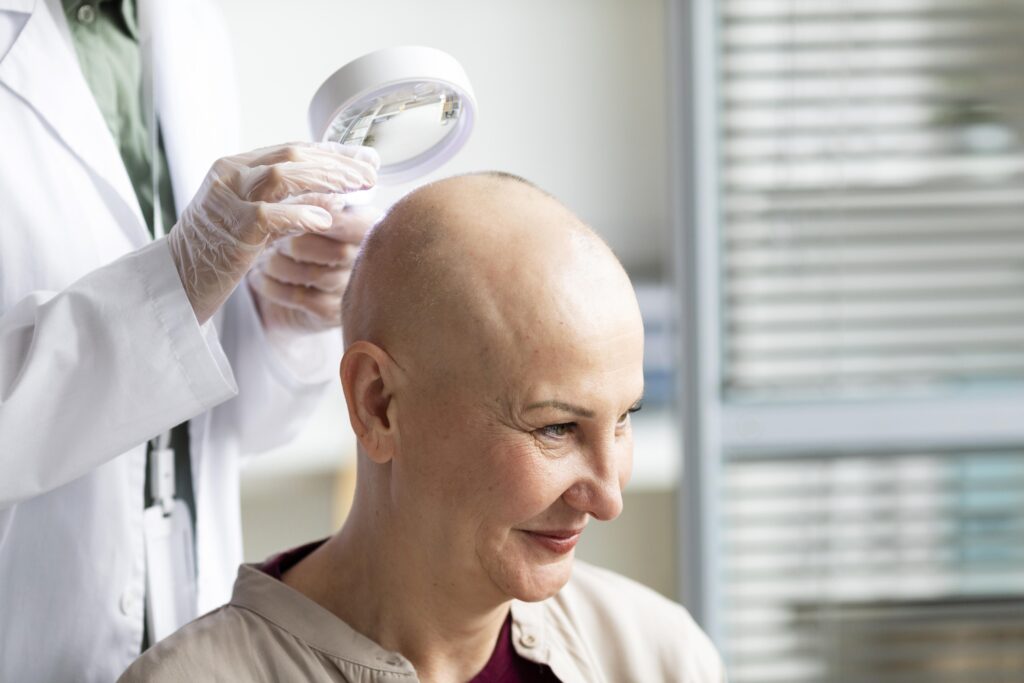Searching for an effective Is There a Cure for Alopecia Universalis? can feel overwhelming, especially when dealing with total hair loss on the scalp and body.
Is There a Cure for Alopecia Universalis? Options now include advanced treatments like JAK inhibitors, immunotherapy, and personalized care plans that promote hair regrowth and restore confidence.

Backed by expert dermatologists and clinical research, these therapies offer hope for reversing even severe autoimmune hair loss.
Understanding the latest medical breakthroughs empowers you to take control of your condition and explore safe, science-backed solutions tailored to your needs.
Is There a Cure for Alopecia Universalis?
Alopecia Universalis is a rare autoimmune disorder, considered the most severe form of alopecia areata. It occurs when the body’s immune system mistakenly attacks hair follicles, resulting in the complete loss of scalp and body hair.
Key Features:
- Total hair loss on scalp, eyebrows, eyelashes, and body
- Can develop suddenly or progress from alopecia areata
- May be associated with other autoimmune conditions (e.g., thyroid disorders, vitiligo)
Can Hair Grow Back After Alopecia Universalis?
In some cases, yes — spontaneous regrowth is possible, especially in younger patients or those with shorter disease duration. However, outcomes vary, and relapses may occur.
Factors influencing regrowth:
- Age and immune profile
- Early treatment intervention
- Use of targeted medications

Treatment Options for Alopecia Universalis
1. Topical and Oral Immunosuppressants
- Oral corticosteroids or topical clobetasol may reduce inflammation
- Best suited for short-term symptom control
- Long-term use requires medical supervision due to side effects
2. JAK Inhibitors (Janus Kinase Inhibitors)
- Medications like Tofacitinib and Baricitinib are emerging options
- Target the immune pathway responsible for hair follicle attack
- Have shown regrowth results in many AU patients
⚠️ Note: These drugs are still being evaluated for long-term safety and may not be suitable for all.
3. PRP Therapy (Platelet-Rich Plasma)
At Dr. Rana Irfan’s Clinic in Islamabad, PRP is offered as a non-surgical regenerative treatment. The patient’s blood is processed to extract growth factors that are injected into the scalp, promoting hair follicle health and potential regrowth.
- Minimally invasive
- No downtime
- Suitable as a complementary treatment
4. Micropigmentation and Cosmetic Solutions
For patients looking for aesthetic restoration, scalp micropigmentation (SMP), artificial eyebrows, and lash enhancement procedures are available at the clinic to improve appearance and confidence.
Who Can Benefit From Treatment?
Treatments are tailored to:
- Individuals recently diagnosed with AU
- Patients with partial regrowth or patchy universalis
- Individuals seeking non-surgical aesthetic solutions
- Those exploring combined medical and regenerative therapies

Why Choose Dr. Rana Irfan in Islamabad?
- Certified by ABHRS (American Board of Hair Restoration Surgery)
- Member of ISHRS (International Society of Hair Restoration Surgery)
- 20+ years of experience in treating complex hair loss conditions
- Offers advanced PRP, micropigmentation, and medical therapy guidance
- Located in the heart of Islamabad, easily accessible for both local and international patients
Treatment Timeline and Recovery
- Topical/oral therapies: Initial response in 6–12 weeks
- JAK inhibitors: Results are often visible after 3–6 months
- PRP sessions: Performed monthly for 3–4 months, with maintenance
- No surgical recovery required for PRP or medication-based treatments
Local and Global Patient Access
Dr. Rana Irfan’s clinic serves patients from across Pakistan, with a growing number of medical tourists visiting Islamabad for safe, ethical, and personalized hair restoration solutions.
Links Suggestions:
Frequently Asked Questions (FAQs)
Is there a permanent cure for alopecia universalis?
There is no guaranteed permanent cure. However, therapies like JAK inhibitors and PRP may help manage the condition and support hair regrowth.
Can alopecia universalis be reversed?
Some patients experience full or partial regrowth, especially with early and targeted treatment. Individual response varies.
How long does it take to see results with treatment?
Treatment timelines differ, but improvements may begin in 3–6 months, depending on the therapy used.
Are there non-surgical options for alopecia universalis?
Yes. PRP therapy, topical immunosuppressants, and JAK inhibitors are non-surgical treatments available at our clinic in Islamabad.
What’s the difference between alopecia areata and universalis?
Alopecia areata causes patchy hair loss, while alopecia universalis results in total loss of scalp and body hair.
